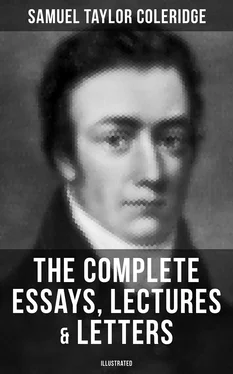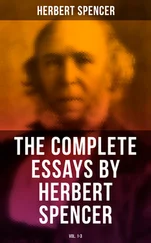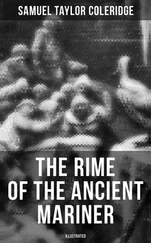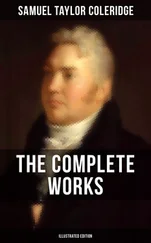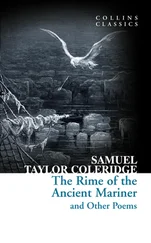I expect neither profit nor general fame by my writings; and I consider myself as having been amply repaid without either. Poetry has been to me its own ‘exceeding great reward;’ it has soothed my afflictions; it has multiplied and refined my enjoyments; it has endeared solitude; and it has given me the habit of wishing to discover the good and the beautiful in all that meets and surrounds me.”
We seem now to have arrived at that period of Coleridge’s life which a profound student of his poetry, and himself a pleasing and elegant poet, has considered the period of the “Annus Mirabilis.” “The Manhood,” he observes, “of Coleridge’s true poetical life was in the year 1797.” This is perfectly true, and at that period he was only twenty-five, as before stated. He was, as is proved in his earlier poems, highly susceptible and sensitive, requiring kindness and sympathy, and the support of something like intellectual friendship. He tells us that he chose his residence at Stowey, on account of his friend Mr. Poole, who assisted and enabled him to brave the storm of “Life’s pelting ills.” Near him, at Allfoxden, resided Mr. Wordsworth, with whom, he says,
“Shortly after my settlement there, I became acquainted, and whose society I found an invaluable blessing, and to whom I looked up with equal reverence as a poet, a philosopher, or a man. His conversation extended to almost all subjects except physics and politics; with the latter he never troubled himself.”
Although Coleridge lived a most retired life, it was not enough to exempt him from the watchfulness of the spies of government whose employment required some apparent activity before they could receive the reward they expected. Nor did he escape the suspicion of being a dangerous person to the government; which arose partly from his connexion with Wordsworth, and from the great seclusion of his life. Coleridge was ever with book, paper, and pencil in hand, making, in the language of, artists, “Sketches and studies from nature.” This suspicion, accompanied with the usual quantity of obloquy, was not merely attached to Coleridge, but extended to his friend, “whose perfect innocence was even adduced as a suspicion of his guilt,” by one of these sapients, who observed that
“as to Coleridge, there is not much harm in him; for he is a whirl-brain, that talks whatever comes uppermost; but that Wordsworth! he is a dark traitor. You never hear him say a syllable on the subject.”
During this time the brother poets must have been composing or arranging the Lyrical Ballads, which were published the following year, i.e. 1798. Coleridge also in 1797 wrote the “Remorse,” or rather the play he first called Osorio, the name of the principal character in it, but finding afterwards that there was a respectable family of that name residing in London, it was changed for the title of the Remorse, and the principal character, Osorio, to Ordonio. This play was sent to Sheridan.
The following remarks were given in Coleridge’s “Biographia Literaria,” which wholly clears him from the suspicion of being concerned in making maps of a coast, where a smuggler could not land, and they shew what really was his employment; and how poets may be mistaken at all times for other than what they wish to be considered:
“During the first year that Mr. Wordsworth and I were neighbours, our conversations turned frequently on the two cardinal points of poetry, — the power of exciting the sympathy of a reader by a faithful adherence to the truth of nature, and the power of giving the interest of novelty by the modifying colours of imagination. The sudden charm which accidents of light and shade, which moonlight or sunset diffused over a known and familiar landscape, appeared to represent the practicability of combining both. These are the poetry of nature. The thought suggested itself (to which of us I do not recollect) that a series of poems might be composed of two sorts. In the one the incidents and agents were to be, in part at least, supernatural; and the excellence aimed at was to consist in the interesting of the affections by the dramatic truth of such emotions as would naturally accompany such situations, supposing them real; and real in ‘this’ sense they have been to every human being who, from whatever source of delusion, has at any time believed himself under supernatural agency. For the second class, subjects were to be chosen from ordinary life: the characters and incidents were to be such as will be found in every village and its vicinity, where there is a meditative and feeling mind to seek after them, or to notice them when they present themselves.
In this idea originated the plan of the ‘Lyrical Ballads,’ in which it was agreed that my endeavours should be directed to persons and characters supernatural, or at least romantic; yet so as to transfer from our inward nature a human interest and a semblance of truth sufficient to procure for these shadows of imagination that willing suspension of disbelief for the moment which constitutes poetic faith. Mr. Wordsworth, on the other hand, was to propose to himself, as his object, to give the charm of novelty to things of every day, and to excite a feeling analogous to the supernatural, by awakening the mind’s attention from the lethargy of custom, and directing it to the loveliness and the wonders of the world before us, — an inexhaustible treasure; but for which, in consequence of the feeling of familiarity and selfish solicitude, we have eyes yet see not, ears that hear not, and hearts that neither feel nor understand.
With this view I wrote the ‘Ancient Mariner,’ and was preparing, among other poems, the ‘Dark Ladie’ and the ‘Christabel,’ in which I should have more nearly realized my ideal than I had done in my first attempt: but Mr. Wordsworth’s industry had proved so much more successful, and the number of his poems so much greater, that my compositions, instead of forming a balance, appeared rather an interpolation of heterogeneous matter.
Mr. Wordsworth added two or three poems written in his own character, in the impassioned, lofty, and sustained diction, which is characteristic of his genius. In this form the ‘Lyrical Ballads’ were published, and were presented by him as an ‘experiment’, whether subjects, which from their nature rejected the usual ornaments and extra-colloquial style of poems in general, might not be so managed, in the language of ordinary life, as to produce the pleasurable interest which it is the peculiar business of poetry to impart.
To the second edition he added a preface of considerable length, in which, notwithstanding some passages of apparently a contrary import, he was understood to contend for the extension of the style to poetry of all kinds, and to reject as vicious and indefensible all phrases and forms of style that were not included in what he (unfortunately, I think, adopting an equivocal expression) called the language of ‘real’ life. From this preface, prefixed to poems in which it was impossible to deny the presence of original genius, however mistaken its direction might be deemed, arose the whole long-continued controversy. For, from the conjunction of perceived power with supposed heresy, I explain the inveteracy, and in some instances, I grieve to say, the acrimonious passions, with which the controversy has been conducted by the assailants.” (Vol. ii. p. 1.)
There are few incidents in the life of the literary man to make any narrations of sufficient importance or sufficiently amusing for the readers, and the readers only of works of amusement. The biography of such men is supposed to contain the faithful history and growth of their minds, and the circumstances under which it is developed, and to this it must be confined.
What has been done by Coleridge himself, and where he has been his own biographer, will be carefully noticed and given here, when it falls in with the intention and purposes of this work; for this reason the Biographia Literaria has been so frequently quoted. Coleridge had passed nearly half his life in a retirement almost amounting to solitude, and this he preferred. First, he was anxious for leisure to pursue those studies which wholly engrossed his mind; and secondly, his health permitted him but little change, except when exercise was required; and during the latter part of his life he became nearly crippled by the rheumatism. His character will form a part in the Philosophical History of the Human Mind, which will be placed in the space left for it by his amiable and most faithful friend and disciple, whose talents, whose heart and acquirements makes him most fit to describe them, and whose time was for so many years devoted to this great man. But, to continue in the order of time, in June, 1797, he was visited by his friend Charles Lamb and his sister.
Читать дальше
